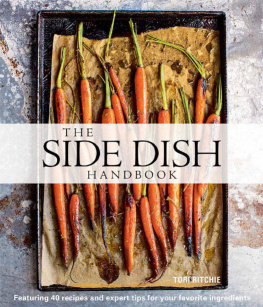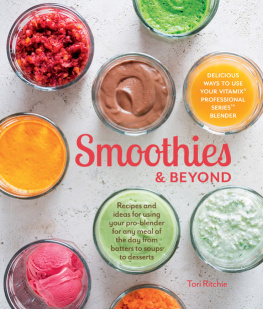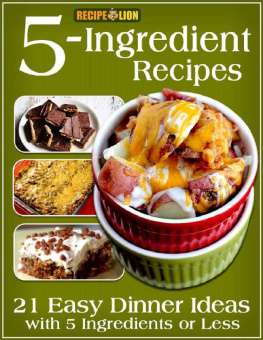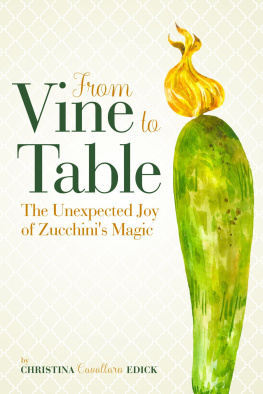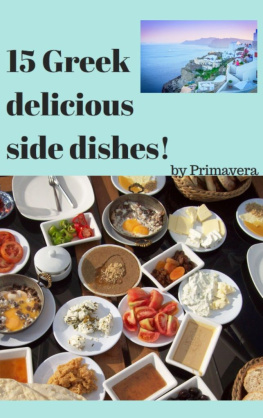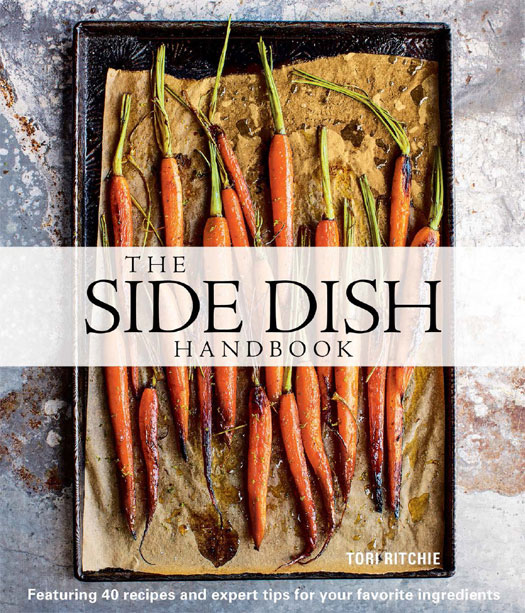The first step to a great side dish is letting the market tell you when to make it. Whether you shop daily or on the weekends, go with what is in season and looks best that day. In other words, dont choose a recipe first, then force it to happen when the main ingredient looks past its prime. This book is organized as a handbook, so you can refer to it at the market or when you get home. Better to grab the corn or tomatoes at their absolute peak and make than to head out with a must-have vegetable on your shopping list only to discover that its time has passed.
You will also find surefire seasonal recipes here that will allow you to plan ahead. Spring means asparagus, fava beans, and English peas, so consider recipes featuring those vegetables when your local markets start looking green. Fall is mushroom time, which means the and youll have an amazing dish to fall back on any time of the year.
Whether or not you buy organic produce is a personal decision. Just bear in mind that organic growing methods are gentler on the environment, and that the produce they yield tends to taste better than its conventionally grown counterpart. Nowadays, some organic produce is cultivated in another hemisphere and flown long distances, however, so it may not be the wisest choice. And since organic food is not always accessible or affordable, the best advice is to shop locally and seasonally above all else.
A MATTER OF TASTE (AND SMELL AND FEEL)
When you are choosing vegetables at the market, use all your senses to examine them. Check for vivid color and no rotten spots with your eyes, for the right texture and heft with your hands, for sunny fragrance (such as in tomatoes and herbs) with your nose, and even scrunchiness with your ears (a good indication that chard and other greens are really fresh). If you are lucky enough to encounter a vendor offering tastes, those bites are the perfect indicator if what is being sold is truly ripe.
At home, use all your senses when you cook, too. Often the most underrated is smell. We depend on our eyes and hands to guide us through the steps of a recipe, but its our nose that will tell us when something is perfectly cooked. Just take a whiff of your kitchen when broccoli is roasting. At first it will smell raw, almost cabbagey, but when the exact moment of caramelization is reached, the fragrance will be sweet and toasty and irresistible. Thats when its time to open up the oven.
Then theres taste. The whole goal of this book is to get maximum flavor out of each of the forty ingredients. The choice of cooking method is crucial, but so is the balance of salt, fat, and acid in each recipe. Plus, theres the element of contrast. When the central ingredient is a vegetable or grain, the play of crunchy and soft, creamy and crisp, even hot and cold is what makes each recipe great. To achieve this, bread crumbs, nuts, cheese, spices, olives, fresh citrus and herbs, and preserved lemons are deployed in just the right combinations.
10 HOLIDAY SIDE DISHES
COOKING SIDE DISHES
You will find a lot of roasted vegetables in this book. The brassicas, such as cabbage, broccoli, and brussels sprouts, and the roots, like carrots and beets, benefit from the intense dry heat of an oven, which concentrates sugars and provides the sublime contrast of crunchy on the outside and soft and tender on the inside.
Other cooking methods used are sweating (letting the vegetable cook, covered, in its own juices), braising (covered, but with more liquid and other ingredients added to exchange flavors), sauting or stir-frying (stirring quickly in an open pan with minimal fat), broiling (tucking dishes under the broiler to brown their surface), and grilling (cooking foods over an outdoor gas or charcoal grill). What you wont find is steaming, which drains away flavor rather than enhances it, or deep-frying, which masks an ingredient rather than highlights it.
To make cooking side dishes easy and efficient, you need just a few pieces of equipment. The most common is a sharp chefs knife. With it, you can prep almost everything in this book. For very fine slicing, a mandoline or a food processor is handy. Graters, including a box grater and a Microplane zester, are also practical.
A large, 10- to 12-inch (25- to 30-cm) saut pan is indispensable. What distinguishes it from the relatively shallow, flare-sided frying pan (skillet) is its straight sides about 3 inches (7.5 cm) high and a snugly fitting cover. This single pan enables you to saut, sweat, brown, braise, or sear, and the size is ideal for recipes serving four to six people. Round all-purpose pans with loop handles, stove-top woks, and wide frying pans also work, as long as they have a matching lid.
Because roasting is an essential method, youll need a few sturdy baking sheets. Rimmed half sheet pans (18 by 13 by 1 inch/45 by 33 by 2.5 cm) are the best because the food wont roll off when you move the pan from counter to oven and back again. Parchment paper is crucial for roasting vegetables because it keeps the food from sticking, blots excess oil, and makes cleaning the baking sheet as simple as a wipe down.




